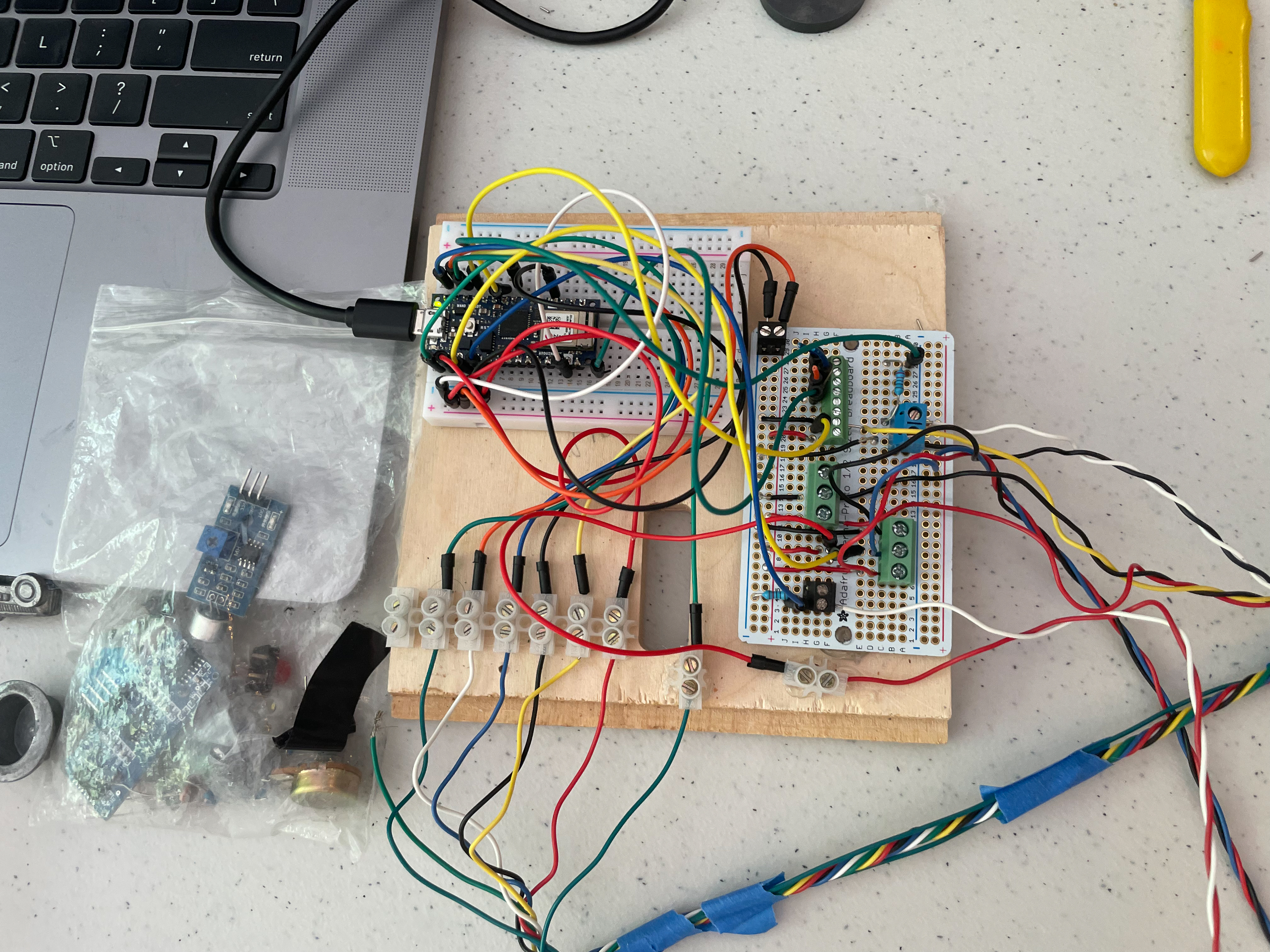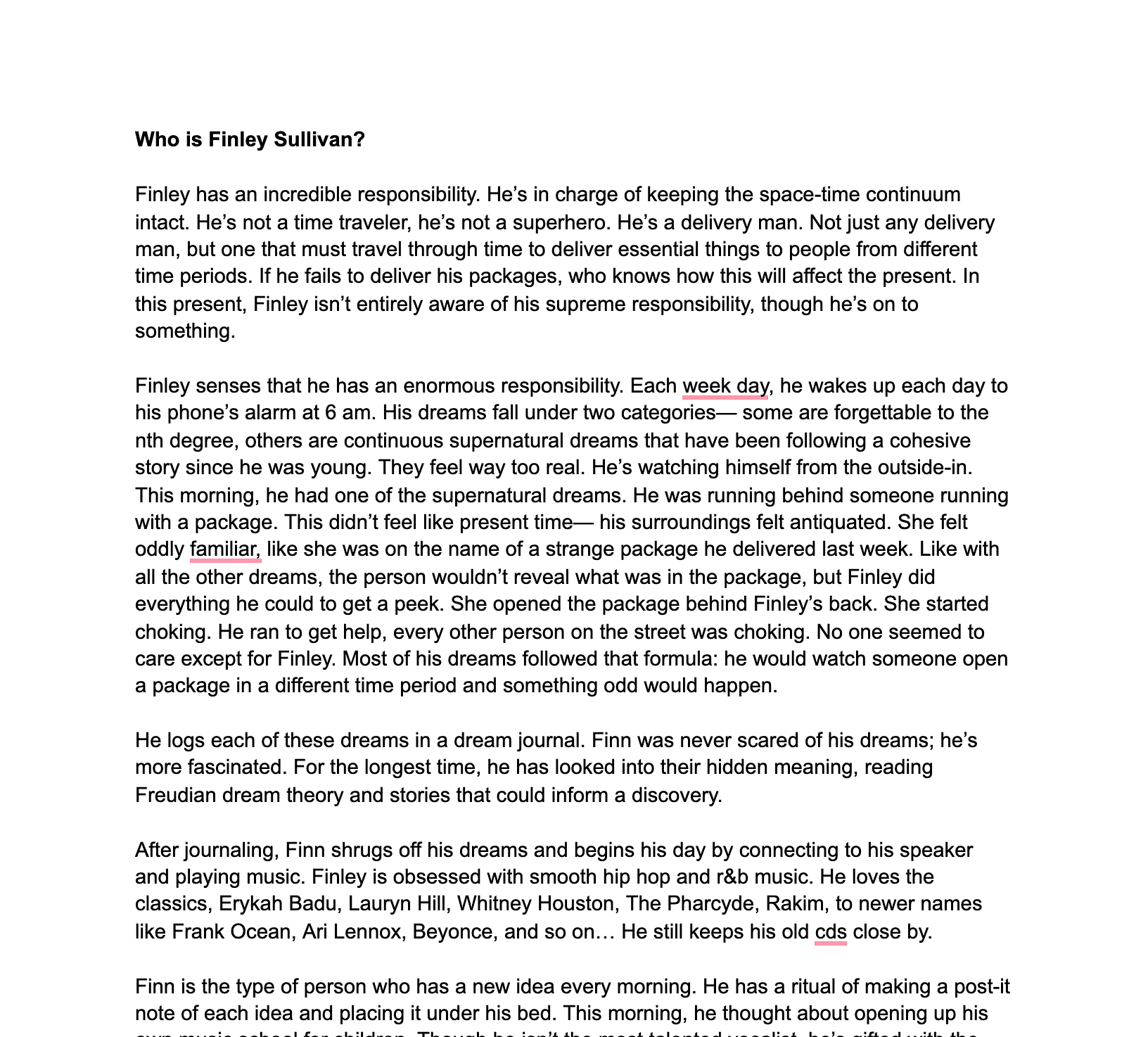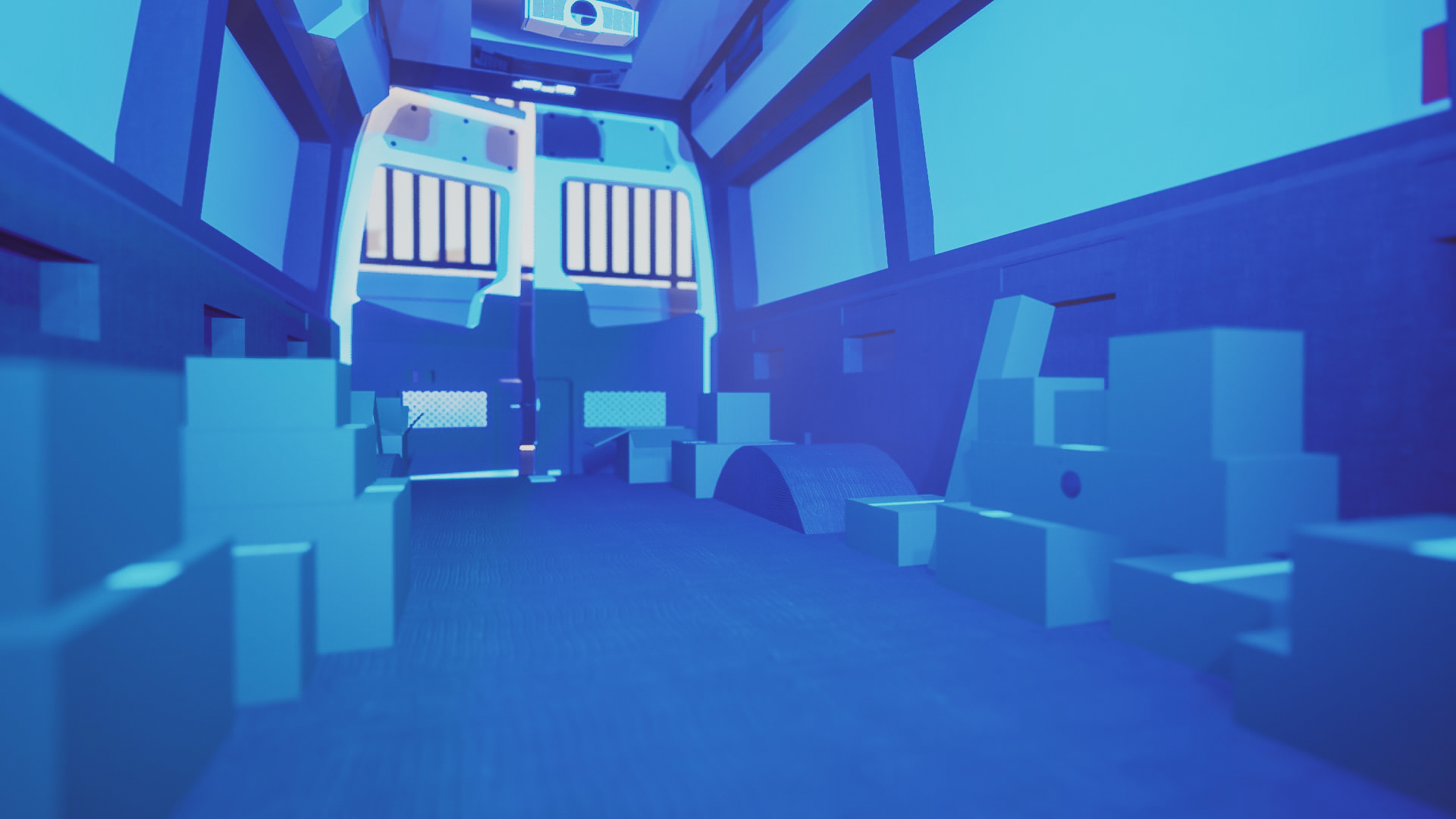Finley’s Van
IMA Low Res
Physical Installation, Storytelling
Summer 2021
Explore the life of Finley Sullivan through a physical installation infused with science-fiction, narratives, and objects tied to his past, present, and future.
Skills Used:
- World-building/ Character-building
- Production Planning & Scheduling
- TouchDesigner
- Physical Computing
- Arduino
- Python
- DMX Light Communication
- Fabrication and Prop Making
- Pro Tools
- Sketchup & Twinmotion
Project Timeline can be found here.
IMA Thesis Archive page can be found here.
Watch the full presentation here.
Watch the documentation video here.









Abstract
Can physical objects make up who someone truly is? What are those things that teach us about who a person is? Is it possible to create a playful, yet meaningful, sincere space where we can explore someone’s belongings? Finley’s Van pieces together Finley Sullivan through objects.
Parked in a dark garage is a van full of someone’s belongings. A mysterious note is attached to the back door. As you enter the van, you find yourself surrounded by objects that at first glance appear to be junk. A voice can be heard, asking you to hold, inspect, and remember what’s inside. As you play and connect with the objects, the story of Finely Sullivan unravels.
“Finley’s Van” is an interactive experience exploring the life of Finley Sullivan, a 20-something FedEx delivery driver with a strange condition that has followed him through his life: he slips in and out of time dimensions. At a young age, it was just momentary flashes. As he got older, they became more vivid, until he saw a jaded, bored, hallowed older version of himself. Finley feels the only way to preserve his older self is by packing up his things in a van and traveling in time so he can show his future self their stuff.
Unlike a traditional museum experience that teaches biography through a display of data and historical facts, “Finley’s Van” leverages physical interaction and emotion as a way for visitors to learn and connect with someone new.
The experience is a metaphor conveying how powerfully objects can embody someone’s essence, their personal story, and their memories. Installation visitors step away with an intimate relationship with someone new.
Early Development
To begin,I made a couple of janky prototypes that interrogated object manipulation and object-memory association. I Brainswarmed, built a Cornell Box, conducted a Google Form object-association activity with my family, and a memory mining activity helped me compartmentalize my topic. Though academic research didn’t heavily influence my process, there was a tidbit from Chris Speeds’s An Internet of Old Things that encapsulates this phase of the project:
“The objects with which we surround ourselves "provoke thoughts and emotions, constitute part of our identity, act as cues in the process of remembering and mediate our relationship to our memories, therefore acting as intermediaries between future and past."
-Chris Speed, An Internet of Old Thing
Middle Development
Character-building:
To build an installation about a fictional character requires breathing that character into existence. An enormous amount of time went into Finley’s story: his life, his background, his family, what he likes, what he dislikes, his dreams, his time-traveling ability, his decisions, and so much more. Building someone from scratch was an imaginative process. His story and how it applied to this installation went through multiple iterations.
Writing and recording Finley’s audio:
What were the moments that I wanted Finley to reveal in the experience? I knew I had to leave enough ambiguity for the guest to have the freedom to fill in the gaps; to write parts of his story.
Prototype:
At this point, I had enough for an initial protoype. I constructed a make-shift Finley’s Van installation in my NYC apartment, complete with lights, audio, projections, and Finley’s artifacts.
Late Development
Tech Implementation:
I wanted there to be hidden triggers throughout the experience activating Finley’s audio bites. The invisibility between the tech and the guest experience was crucial. I worked with my Arduino Nano to set up three different sensors: an LDR, a hall effect sensor, and an NFC reader. There’s also a hidden LED and a neopixel. Each sensor lives in objects within the installation. For install, I made a control center with my Arduino connected to a PCB breadboard. In the van, the sensors are implemented with soldered wire to the control center in the passenger seat.
Artifact scouting and construction:
The objects I wanted to display in the van to communicate Finley’s story were important. It took time to source various objects, write fictional in-world content, and arrange them intentionally.
Van install:
Transitioning everything from having a working system in front of me into a van was the greatest challenge. This included gaffing wires, drilling holes, taping sensors, and so on.






























